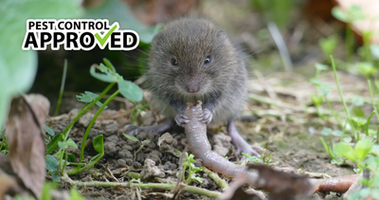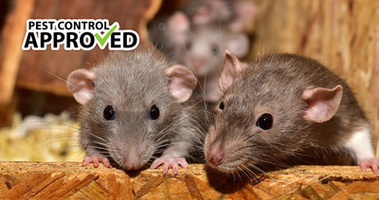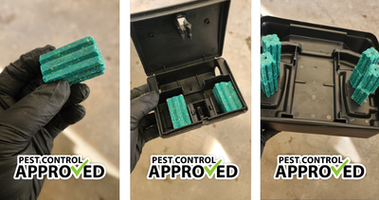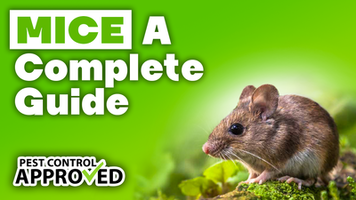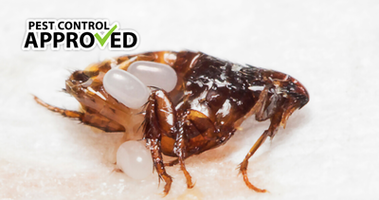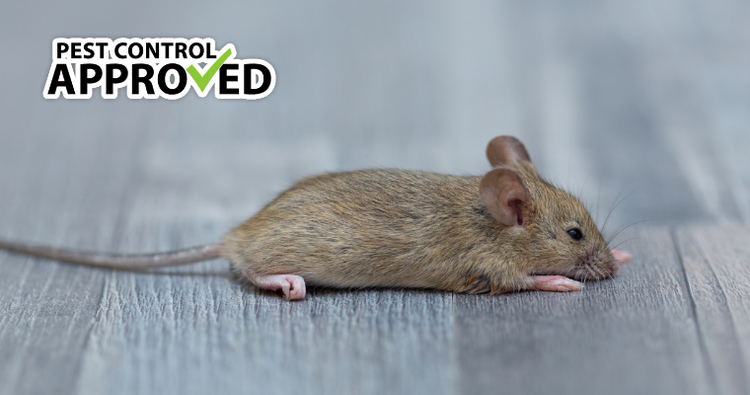
House Mouse
The House Mouse is abundant in North America and are considered both a pest and pet, depending on who you ask. House mice are sold in pet stores as “Fancy Mice” and are also used in laboratory settings. Nonetheless, they are also a household and agricultural pest. They are most active at dawn, dust, and at night. They can jump, swim, climb, and squeeze through incredibly small holes. Coupled with their rapid reproductive rate, they can quickly destroy homes and crops. Finding the right Mouse Exterminator in your area is key to getting rid of an active infestation.
NAME: Mus musculus
LOCATION: North America, Europe, Australia
HABITAT: Grasslands, fields
DIET: Omnivore
SIZE: 3” – 4”
PREDATORS: Owls, Domestic animals
LIFE EXPECTANCY: < 1 year
Size
House mice are small rodents with a body length of three to four inches from nose to rump. Their tail is another two to four inches.
Appearance
House mice are grey, light brown, or black. The domestic variety have more color variations, but most wild ones have a lighter coloured stomach. They have short feet, large, rounded ears, and thin whiskers. Their ears and tails have no fur and their feet are relatively short.
Diet
House mice are opportunistic omnivores. They will eat anything they have access to. Outdoors, they hunt insects like caterpillars, spiders, and mites. They also eat seeds, berries, grasses, and grains. They usually eat more grains than berries, especially if they live on farmland. When food is scarce, they will turn to cannibalism. Indoors, mice eat crumbs, pet food, and cardboard. They can chew through plastic or paper packaging and easily slip into garbage cans or under appliances. They commonly leave bite marks on wood, electrical wires, and furniture. They do not eat the wood but need hard substances to file down their ever-growing teeth.
Habitat
House mice are well adapted to cities. They frequently live in or near homes and barns. In homes, they often live in wall voids, attics, basements, and storage areas. They create nests from rags, paper, and other household scraps. They generally nest near food sources and rarely travel far for sustenance. Generally, they nest no further than 10 - 15 feet from food and water sources.
Outdoors, they live in open woodlands, fields, and grasslands. They make burrows in the ground to hide from predators. These burrows have several rooms for nesting, eating etc. They also have three or four exits. Mice will frequently move indoors in colder weather or in search of food.
Reproduction
Like most mammals, female mice have a reproductive cycle. This cycle is four to six days long. The female is pregnant for 19 to 21 days before giving birth to 3 to 14 young. These young are born with their eyes closed and without hair. They begin to develop fur after two weeks. It takes two months before they are able to reach adulthood. Females can have 5 to 10 litters per year although in the northern United States, they don’t mate in the colder months.
Predators
House mice have many predators including domestic animals, birds, foxes, and snakes. They are common prey for hawks, owls, magpies, and crows. Mice hide in long grasses and in their burrows but can be attacked while hunting for food or travelling too and from their nests. Birds of prey are able to see mice from above and swoop down to catch them. Snakes are able to use their superior sense of smell to find and catch mice in fields and grasslands. Some snakes can only eat the young mice while others are able to consume the adults. Common snake predators include rattle snakes and garter snakes.
Domestic animals also hunt mice. Cats are known for hunting them. They are frequently kept on farms as a deterrent or to catch mice. Feral, semi-feral, and outdoor cats are particularly good mousers. They have a natural prey drive and easily catch hidden mice. Dogs are also surprisingly good hunters. Some smaller breeds such as terriers and dachshunds were bred to hunt rodents. Terriers were bred for rat bating and have a strong kill instinct. They shake their prey to break its neck. Dachshunds were bred to kill burrowing animals. They are able to dig into their burrows and kill the young and adults.
Lifespan
House Mice generally live less than a year in the wild. Predators and the harsh environment mean that many mice die before they reach adulthood. In protected environments, they live two to three years. The oldest mouse was a lab mouse who lived five years.


